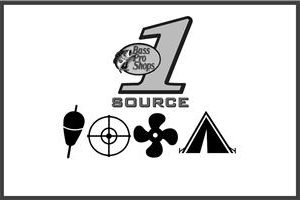
Most anglers spend a great deal of money on artificial lures and use them right out of the box, never spending any time adjusting or improving on the original manufacturer’s design. While many of the lures used “as-is” work well, making a small change can make a big difference in the way the lure performs and may lead to catching more fish.
The first thing I recommend doing shortly after purchasing a new lure is changing the treble hooks provided by the manufacturer. I usually switch mine out with the Owner brand. They are strong, maintain their sharpness and are available in virtually any size.
Speaking of size ... it’s a good idea to match the original treble hook, but in some cases, a slightly larger or smaller size may turn out to be beneficial and improve the action of the lure.
I recently started putting a one-size-larger hook on the rear of my Heddon Zaar Spooks. The change causes the rear of this topwater lure to hang a little lower in the water when paused during retrieval.
This greatly improves my hook ups with redfish. Reds mouths are designed to probe the bottom for food, so they have a difficult time turning up for a surface lure. The slightly extra weight at the end of the lure solved this problem, and there’s nothing quite like the strike of a big redfish on a surface plug! Just about everyone who fishes in southwest Florida has, at one time or another, used a spoon. My favorite is the old classic Johnson Silver Minnow. I like and use the silver color, but gold seems to work best in our local backcountry waters. There’s no question that they’ll catch fish right out of the box, but a small inexpensive addition can dramatically increase strikes.
Just about everyone who fishes in southwest Florida has, at one time or another, used a spoon. My favorite is the old classic Johnson Silver Minnow. I like and use the silver color, but gold seems to work best in our local backcountry waters. There’s no question that they’ll catch fish right out of the box, but a small inexpensive addition can dramatically increase strikes.
Pick up a package of curly tail plastic grubs. Mister Twister's Original Twister Tail Grub in white is my go-to, but don’t hesitate to try other colors. You never know what might work. Remove half of the grub body and thread it onto the hook of the spoon until the grub is right up against the base of the spoon. This add-on allows you to retrieve the lure a little slower and still get the same wiggle action. It also helps bulk up the appearance of the lure and make it look bigger. I tend to trust the old saying, “Big bait, big fish!”
Last, but certainly not least, we come to buck tail jigs. That’s right, the good old basic jig-head-and-deer-hair combinations like the ones made by Offshore Angler or Hank Brown.
The first makeover is fairly simple. Purchase a black permanent marker and start experimenting with vertical stripes on your white bucktail jigs. The idea here is to make them look more like a small pinfish.
The second makeover is going to require a few accessories, but it’s well worth it.
First, you’ll need a fly-tying vise to hold the plain jig head, and then some bucktail deer hair, crystal flash, hackle feathers and fly-tying thread. All of the above can be found in the fly-fishing section at your local Bass Pro Shops. Put the jig in the vise and start adding fur and feathers, and invent a truly unique lure of your own. Think “out of the box” and be creative. Remember, that’s how most of the lures we use today were invented in the first place!
Happy fishing!
Written by Robert (Captain Rob) Modys
- 4894 views

